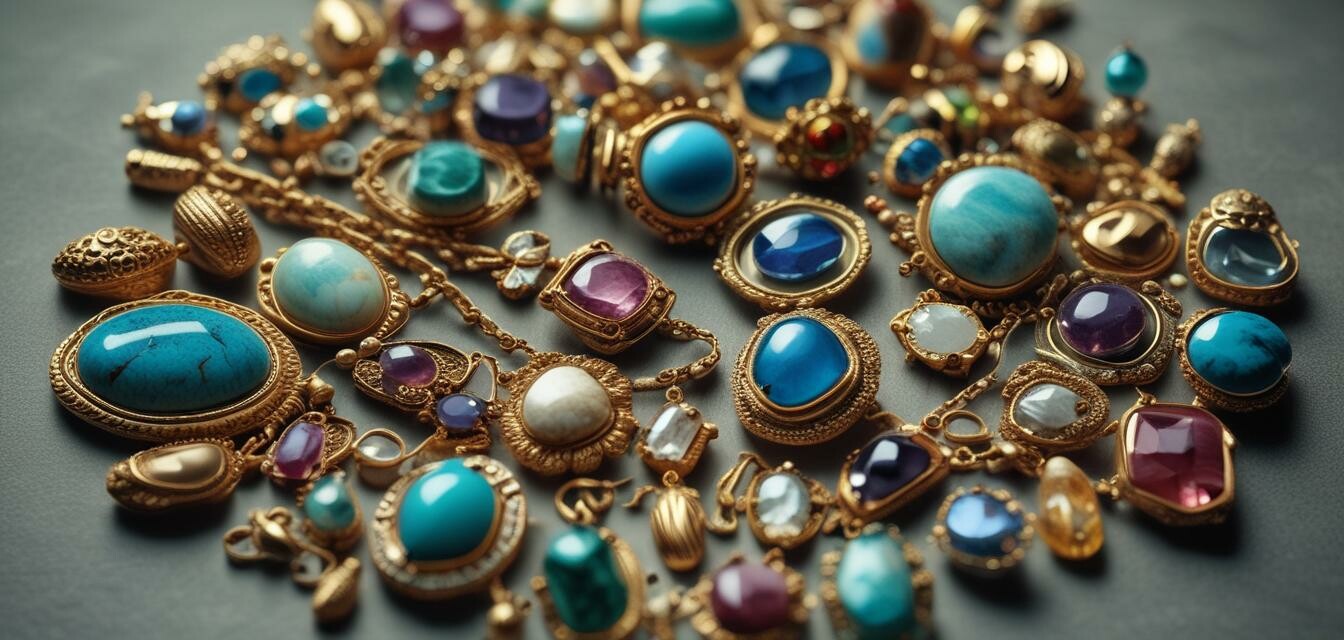
The growing popularity of mixed-material jewelry
As we move into 2025, mixed-material jewelry is capturing the attention of fashion enthusiasts and eco-conscious consumers alike. This trend is not merely a style choice but represents a larger shift in the sustainable fashion landscape. In this article, we will explore the elements fueling this popularity, the artisans behind the pieces, and how mixed materials can contribute to a more ethical and sustainable jewelry industry.
- Mixed-material jewelry is increasingly popular as a sustainable choice.
- It combines various elements, such as gemstones, metals, and organic materials.
- Artisans create unique designs that reflect creativity and eco-conscious values.
- This trend encourages consumers to make informed purchasing decisions.
- Mixed-material pieces showcase innovative techniques and craftsmanship.
What is mixed-material jewelry?
Mixed-material jewelry refers to pieces that combine different elements such as metals, gemstones, wood, resin, and fabric. This eclectic approach allows artisans to showcase their creativity and make unique statements in the jewelry market. The integration of various materials promotes sustainability by utilizing leftover resources, reducing waste, and encouraging innovative design.
The shift towards sustainability in fashion
The fashion industry is undergoing a significant transformation with the rise of sustainable practices. Consumers now demand products that are not only stylish but also ethically sourced and environmentally friendly. This trend is evident in the growing interest in mixed-material jewelry, as it often features:
- Ethically sourced gemstones
- Recycled metals
- Biodegradable or reclaimed materials
Why mixed-material jewelry is trending in 2025
Several factors contribute to the soaring popularity of mixed-material jewelry:
- Creativity and uniqueness: Artisans are using a wide array of materials, resulting in one-of-a-kind pieces that reflect individual styles.
- Personal expression: Consumers are seeking ways to express their identities, and mixed-material pieces offer versatility.
- Sustainability: The re-use of materials aligns with eco-friendly practices, attracting conscious buyers.
- Support for artisans: Consumers increasingly support small businesses and local artisans, driving demand for handmade mixed-material jewelry.
Artisans at the forefront of the trend
Many skilled artisans are embracing mixed-material techniques to create stunning jewelry pieces. Their work often incorporates unique stories and local cultures, enriching the jewelry scene. Some renowned artisans utilize:
- Traditional methods with a contemporary twist
- Handcrafted techniques that emphasize skill and artistry
- Resourceful designs that combine modern aesthetics with sustainable practices
Innovative materials in mixed-material jewelry
The jewelry world is seeing an influx of innovative materials that push the boundaries of design while adhering to ethical standards. Below is a table showcasing some popular materials used in mixed-material jewelry:
| Material | Description | Eco-Friendly Feature |
|---|---|---|
| Recycled metals | Metals sourced from discarded jewelry and other products. | Reduction of mining and waste. |
| Ethically sourced gemstones | Stones that are mined and traded ethically, ensuring fair labor practices. | Support for local communities and conservation. |
| Wood | Natural wood, often reclaimed from furniture or other industries. | Biodegradable and promotes forest conservation. |
| Resin | Usually made from eco-friendly materials, resin can incorporate natural elements. | Can reduce plastic waste by repurposing materials. |
| Organic fabrics | Fabric made from natural fibers such as cotton or silk. | Biodegradable and often grown without harmful chemicals. |
How to style mixed-material jewelry
Wearing mixed-material jewelry adds interest and complexity to any outfit. Here are some tips for styling:
- Pair bold mixed-material earrings with simple tops or dresses to draw attention.
- Layer necklaces of different lengths to create a unique silhouette.
- Mix and match rings made from different materials for a fun and eclectic look.
- Always consider the color palette; choose pieces that complement your outfit.
Understanding the impact of consumer choices
As consumers, our purchasing decisions have a profound impact on the environment and society. Supporting mixed-material jewelry contributes to:
- The promotion of ethical practices within the jewelry industry.
- Encouragement of artisans and smaller businesses.
- A reduction in waste through the use of repurposed materials.
Pros
- Unique designs that stand out from mass-produced jewelry.
- Support for sustainable and ethical practices.
- Rich storytelling through the materials and craftsmanship.
- Encourages creativity in personal style.
Cons
- Potentially higher price points compared to conventional jewelry.
- Limited availability depending on artisans and material sourcing.
- Some materials may require specific care to ensure longevity.
The future of mixed-material jewelry
As we look towards the future, mixed-material jewelry is poised to become a staple in sustainable fashion. Its ability to combine beauty with ethical considerations will likely resonate with more consumers. As awareness grows, the importance of supporting artisans and eco-conscious practices will shape our purchasing habits, leading to a more sustainable industry.
Final thoughts
The thriving popularity of mixed-material jewelry is not just a passing trend but rather a movement towards responsible consumption and self-expression. As we embrace this innovative wave in 2025, it is essential to recognize the artisans and ethical practices that contribute to this vibrant sector. By making informed choices and supporting mixed-material designs, consumers can wear their values with pride.
For more insights on ethical gemstone jewelry, feel free to explore these related topics: